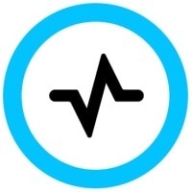

Graylog and Elastic Stack compete in the data analysis and IT infrastructure management sector. Elastic Stack appears to have the upper hand due to its scalability and adaptability, making it a more comprehensive solution for extensive data analysis needs.
Features:Graylog provides real-time alerting, straightforward configuration, and intuitive navigation, which cater to smaller-scale deployments effectively. Elastic Stack offers comprehensive search capabilities, extensive visualization options, and scalability that enable detailed insights into larger data sets.
Room for Improvement:Graylog users suggest enhancing its data visualization tools, integrations with third-party applications, and expanding its feature set to accommodate larger deployments. Elastic Stack could improve by streamlining its complex setup process, reducing the steep learning curve, and offering better documentation to simplify user onboarding.
Ease of Deployment and Customer Service:Graylog is highly regarded for quick setup times and effective support services. Elastic Stack, although challenging to deploy due to complexity, benefits from an active community and extensive resources, partially offsetting limited direct customer service.
Pricing and ROI:Graylog offers a cost-effective solution with lower setup costs, providing satisfactory ROI for its core functionalities. Elastic Stack, priced at a premium, delivers higher returns for enterprises when fully utilizing its advanced analytics and visualization features.


Elastic Stack is a comprehensive tool for log management, observability, indexing, and security, widely adopted for managing logs, alert creation, SIEM, SOC, and threat analysis. It integrates with CloudStrike and Endpoint Security, enhancing search capabilities and Application Performance Monitoring.
Elastic Stack offers powerful solutions for logging, data storage, and visualization with Kibana. It allows MSSPs to efficiently manage security and assists companies with data analysis. It's known for its easy implementation, scalability, real-time monitoring, and extensive integrations. The open-source nature and community support add significant value, making it a popular choice across industries. While highly capable, there is a need for enhancement in dashboard implementation, data integration, and certain advanced features. Licensing, compatibility, and cost-related improvements can further elevate its efficacy.
What are the key features of Elastic Stack?In healthcare, Elastic Stack enhances database search capabilities, aiding in patient record management and data retrieval. Managed Security Service Providers use it for comprehensive security management, integrating it with tools like firewalls and authentication systems. Companies benefit from its application in Application Performance Monitoring and its flexibility in adapting to hybrid environments.
Graylog is purpose-built to deliver the best log collection, storage, enrichment, and analysis. Graylog is:
We monitor all Log Management reviews to prevent fraudulent reviews and keep review quality high. We do not post reviews by company employees or direct competitors. We validate each review for authenticity via cross-reference with LinkedIn, and personal follow-up with the reviewer when necessary.